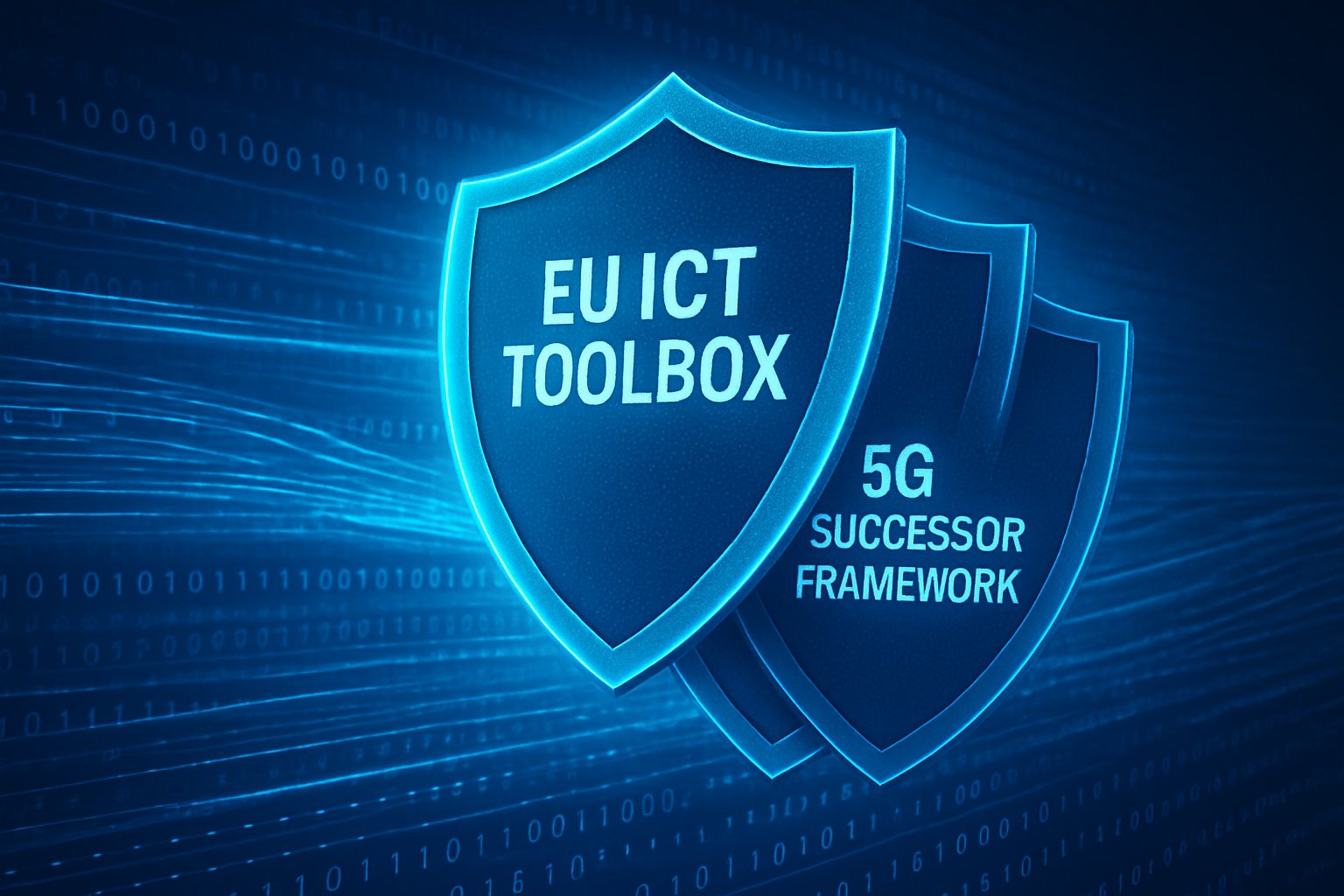
AI CERTS
4 hours ago
EU ICT Toolbox and 5G Successor Framework: Security Path Ahead
Yet the November 2025 expected release date keeps slipping. This article unpacks the Toolbox process, stakeholders, and technical implications. Moreover, it explains how digital technology security objectives intersect with geopolitical realities. It also shows where AI model risk assessment and cyber threat mitigation converge. Consequently, professionals can prepare for procurement shifts driven by the same 5G successor framework.

Toolbox Origins And Scope
Council conclusions from 2022 demanded an EU-wide response to rising ICT supply risks. Therefore, the Commission, ENISA, and the NIS Cooperation Group drafted a horizontal toolbox. Unlike sectoral laws, the toolbox will cover components, software, cloud, and managed services. Furthermore, it adapts lessons from the earlier 5G successor framework into broader guidance.
Drafts circulated in July 2025 mapped strategic dependencies and proposed tiered risk scenarios. Nevertheless, Member States requested clearer links to upcoming Cybersecurity Act revisions. Industry stakeholders also pressed for alignment with security mandates for critical infrastructure.
The scope extends well beyond telecom equipment. However, political consensus remains provisional, setting the stage for deeper negotiations.
Key Statistics Snapshot Data
Hard figures underline why the debate matters. Commission studies reveal stark strategic dependencies.
- EU ICT GDP share fell from 21.8% in 2013 to 11.3% in 2022
- 75–90% of semiconductors sourced from third countries
- Over 80% reliance on foreign digital services and products
- 5G Toolbox reports: 24 Member States prepared supplier laws; 10 imposed actual restrictions
Consequently, policymakers view the new toolbox as an economic as well as security instrument. Historical precedent now guides current negotiations.
5G Successor Framework Context
The 5G successor framework originated during telecom security reforms. It offered coordinated risk scenarios, mitigation measures, and supporting actions. Subsequently, Member States adopted supplier screening laws at varying speeds. However, implementation remained uneven, revealing gaps the broader toolbox must close.
Crucially, Commission officials insist the upcoming guidance will stay voluntary at first. Nevertheless, they hint some measures could become binding through Cybersecurity Act amendments. Meanwhile, industry worries about conflicting obligations across NIS2 and evolving cyber standards.
The November 2025 expected toolbox draft may clarify legal pathways. Stakeholders therefore watch the evolving 5G successor framework for signals on enforcement style. Its history informs cost models and supplier strategies addressed next.
Political Dynamics And Adoption
Member States remain split over strict exclusion rules versus flexible guidance. For example, Sweden and Germany favor strong restrictions on perceived high-risk vendors. In contrast, southern capitals stress affordability and WTO compliance. Consequently, ENISA workshops focus on objective criteria and transparent AI model risk assessment.
Furthermore, the Commission must balance Single Market principles with security imperatives. Diplomats suggest compromises that mirror the graduated approach in the 5G successor framework. The November 2025 expected compromise package could include phased transition periods. Nevertheless, legal experts warn that partial adoption may perpetuate fragmentation.
Political factors therefore shape timelines as much as technical readiness. The next section turns to industry cost projections.
Industry Views And Costs
Automotive association VDA calls for practical and objective supplier criteria. Moreover, it demands realistic transition periods to avoid production disruption. Telecom operators echo those concerns, citing expensive equipment swaps. Huawei and ZTE argue that indiscriminate restrictions violate trade rules.
Meanwhile, European vendors hope stronger trust requirements will expand their market share. Analysts estimate replacing contested kit could cost tens of billions across the bloc. Consequently, many boards tie investment plans to clarity from the 5G successor framework. Industry also asks how digital technology security audits will dovetail with AI model risk assessment processes.
- Harmonisation reduces compliance complexity across borders
- Risk clarity supports targeted cyber threat mitigation investments
- Replacement costs threaten competitiveness if funding remains unclear
- Potential trade disputes add legal uncertainty
Costs and benefits remain tightly coupled to final policy wording. Therefore, companies align lobbying with upcoming security sections.
Security And Risk Measures
Draft toolbox annexes outline technical, strategic, and procurement controls. Additionally, they propose supplier classification based on ownership, governance, and historical vulnerabilities. High-risk categories would trigger enhanced audits and cyber threat mitigation plans. Moreover, certain scenarios require continuous AI model risk assessment for cloud and edge services.
ENISA suggests mandatory penetration testing for critical software updates. Therefore, guidance mirrors the layered defense already proven in the 5G successor framework. Digital technology security objectives underpin every recommended control family. Professionals can enhance expertise with the AI Network Security™ certification.
These measures could raise baseline resilience across sectors. However, achieving consensus on enforcement leads naturally to the timeline discussion.
Next Steps And Timeline
Commission sources indicate an updated draft will surface early 2026. Subsequently, the NIS Cooperation Group will coordinate a final review cycle. Nevertheless, many observers still reference the November 2025 expected milestone in every briefing. DG CONNECT may then publish the official toolbox alongside the Cybersecurity Act proposal.
Eventually, selective measures could migrate into EU cybersecurity certification schemes. Consequently, the 5G successor framework will continue guiding telecom elements during the transition. Meanwhile, companies should map suppliers, document AI model risk assessment workflows, and plan cyber threat mitigation budgets. Digital technology security teams must feed those inputs into board reporting.
In contrast, policymakers will monitor Member State politics before promising rigid deadlines. Consequently, stakeholders should bookmark Commission pages and schedule quarterly updates. The roadmap therefore hinges on political compromise and technical validation. This concluding section synthesizes key takeaways and presents next actions.
The EU is rewriting supply chain security with unprecedented breadth. However, final text and legal force remain uncertain. The 5G successor framework still provides the most concrete roadmap for immediate telecom action. Moreover, digital technology security goals demand cross-sector alignment. Stakeholders should prepare documented AI model risk assessment procedures across all critical services.
They must also budget for staged cyber threat mitigation investments. Professionals seeking competitive advantage can validate skills through the linked AI Network Security™ certification. Consequently, timely preparation will reduce costs once the toolbox moves from draft to reality. Stay engaged, monitor Commission channels, and embrace rigorous security practice today.



